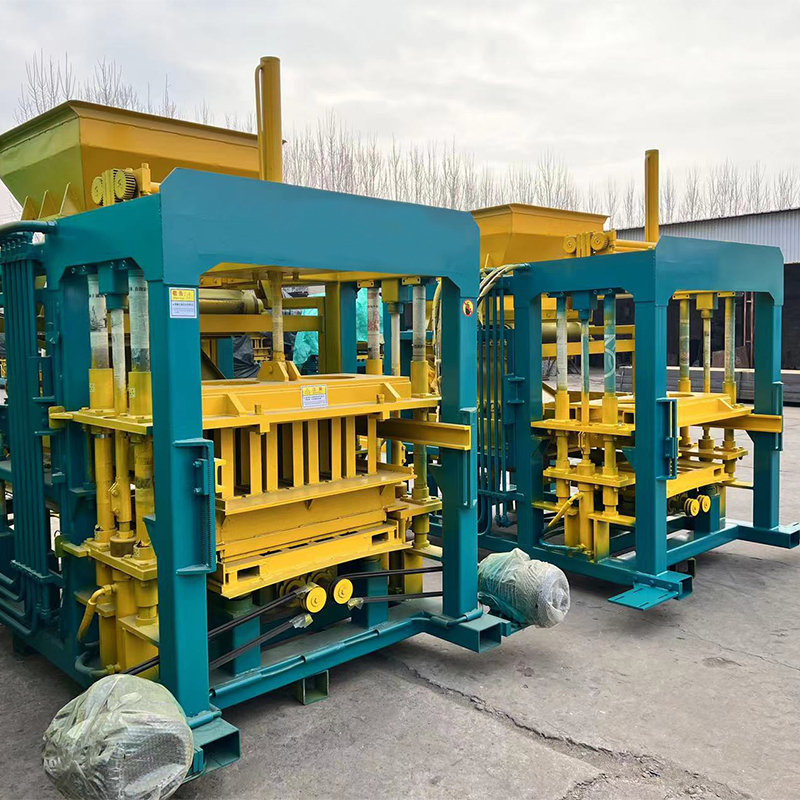
Image source :Aiweiblockmachine
Block Machinery and Eco-Friendly Construction
In an era marked by environmental consciousness and the pursuit of sustainable practices, the construction industry stands at a critical juncture. At the heart of this transformation is the integration of block machinery into eco-friendly construction. This article, spanning 4,000 words, explores the profound impact of block machinery on eco-friendly construction, tracing its evolution, examining its role in sustainable building practices, and showcasing innovative technologies and materials that promise a greener and more sustainable future for the industry.
I. Introduction
The construction industry is a significant contributor to global environmental issues, including resource depletion, energy consumption, and waste generation. As society embraces sustainable living, the construction sector is compelled to adapt and innovate. At the forefront of this transformation lies block machinery—a linchpin in eco-friendly construction.
II. The Evolution of Block Machinery
1. From Manual Labor to Hydraulic Presses
The historical evolution of block machinery paved the way for eco-friendly construction practices. The transition from manual brickmaking to hydraulic presses in the late 19th century heralded a significant leap forward in terms of efficiency and consistency.
2. The Industrial Revolution and Automation
The Industrial Revolution accelerated the mechanization of construction, spurring the development of automated block machinery. These machines enabled precision, higher production rates, and reduced labor requirements.
III. The Role of Block Machinery in Sustainable Construction
Block machinery plays a multifaceted role in eco-friendly construction practices.
1. Sustainable Materials
Incorporating sustainable materials such as fly ash, recycled aggregates, and slag into block production significantly reduces the environmental impact of construction.
2. Waste Reduction
Efficient block machinery minimizes waste generation during the production process, aligning with the principles of a circular economy.
3. Energy Efficiency
Block machinery equipped with energy-efficient features, including variable frequency drives, optimizes power consumption, reducing the carbon footprint.
4. Versatile Block Designs
Block machinery enables the production of versatile and sustainable block designs, including lightweight blocks for energy-efficient construction.
IV. Sustainable Energy Solutions
1. Solar-Powered Block Machinery
Solar-powered block machinery harnesses renewable energy to reduce operational energy costs and lower carbon emissions.
2. Biomass and Waste Heat Recovery
Innovative solutions like biomass and waste heat recovery systems are being integrated into block machinery, further contributing to sustainable energy practices.
V. The Sustainable Revolution
Eco-friendly construction, driven by the power of block machinery, is undergoing a transformative revolution.
1. Green Building Certifications
Block machinery supports the construction of green-certified buildings, which adhere to stringent sustainability standards.
2. Carbon Capture and Storage (CCS)
Exploring the integration of CCS technology in construction materials allows blocks to capture and store carbon dioxide, mitigating the industry’s carbon footprint.
VI. Digital Integration
Block machinery is increasingly integrating with digital technologies, amplifying its impact on eco-friendly construction.
1. Internet of Things (IoT)
IoT technology monitors and optimizes block machinery operations, reducing waste and energy consumption.
2. Big Data and Analytics
Data analytics processes the vast amount of data generated by block machinery, providing insights to enhance efficiency and quality control.
3. Remote Monitoring
Remote monitoring of block machinery allows for proactive maintenance, reducing downtime, and optimizing performance.
VII. Sustainable Block Materials
1. Lightweight and Insulating Blocks
Block machinery now produces lightweight and insulating blocks, enhancing energy efficiency in buildings.
2. Recycled and Green Blocks
Blocks made from recycled materials and sustainable sources are increasingly used in eco-friendly construction projects.
VIII. Future Trends and Innovations
The future of block machinery in eco-friendly construction holds exciting possibilities.
1. Nanotechnology in Block Materials
Exploration of nanomaterials for stronger, more durable, and sustainable block materials promises extended building lifespans.
2. 3D Printing
3D printing technology is revolutionizing block production, offering customized, on-site, and sustainable solutions.
3. Sustainable Building Materials
Innovations in sustainable materials like bio-based blocks hold the potential to redefine the construction landscape.
IX. The Business Case for Eco-Friendly Construction
Eco-friendly construction practices have tangible benefits for businesses, including cost savings, increased market demand, and improved corporate social responsibility.
X. Case Studies in Eco-Friendly Construction
Real-world examples of eco-friendly construction projects showcase the practical application of block machinery in sustainable building practices.
XI. The Global Impact of Eco-Friendly Construction
Eco-friendly construction, driven by block machinery, has a global impact on mitigating climate change, conserving resources, and creating healthier living environments.
XII. Conclusion
The power of block machinery in eco-friendly construction is undeniable. As society increasingly embraces sustainability, the construction industry is compelled to adapt and innovate. Block machinery, with its ability to produce sustainable materials, minimize waste, and optimize energy efficiency, stands as a beacon of hope in the journey toward a greener, more sustainable future for construction. By harnessing the power of block machinery and its integration into eco-friendly construction practices, we can build a world that is not only functional and aesthetically pleasing but also environmentally responsible and future-proof. The transformation has begun, and the path to a sustainable construction industry is illuminated by the remarkable power of block machinery.
